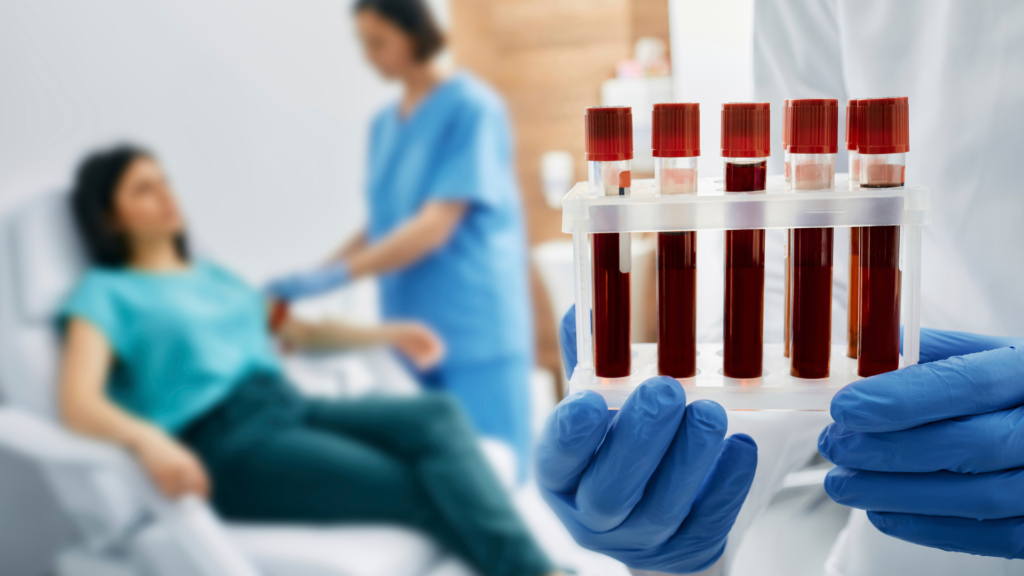Healthcare heroes, we see you. Saving lives, holding hands, keeping calm during chaos, and doing it all while risking exposure to some seriously gnarly stuff. We’re talking bloodborne pathogens. They’re tiny, they’re dangerous, and they’re not picky about who they infect.
But here’s the good news: you don’t have to play roulette with your health. With the right knowledge, gear, and protocols, you can stay safe and keep doing what you do best, changing lives without sacrificing your own.
So what exactly are bloodborne pathogens and why should you care?
If it can travel through blood and ruin your day, it qualifies. These little troublemakers may be microscopic, but the damage they do is anything but small.
- Hepatitis B Virus (HBV): Messes with your liver and can turn into lifelong issues like liver cancer. Not a fun time.
- Hepatitis C Virus (HCV): Similar story, different virus. Chronic liver damage is its not-so-cute calling card.
- Human Immunodeficiency Virus (HIV): Destroys your immune system and, left untreated, leads to AIDS.
Think this only affects nurses and doctors? Think again. If you’re anywhere near blood or body fluids, sharps, linens, lab samples, you’re on the guest list too.
If your job comes with gloves and a risk of splashes, this is for you.
From ER teams to janitorial staff, exposure isn’t just possible, it’s likely, unless you know how to dodge it like a pro. Here’s who’s especially at risk:
- Frontline workers: Nurses, EMTs, doctors, dentists, basically, anyone who gets up close and personal with patients.
- Support staff: If you clean, wash, or handle the aftermath, you’re part of this conversation.
- Anyone handling sharps: Needles don’t care what your job title is. One slip and they’re in.
If it looks like blood, treat it like danger. Period.
Standard Precautions are your best friend. Treat all blood and other potentially infectious materials (OPIM) like they’re carrying a surprise you don’t want.
- Hand Hygiene: Scrub like your life depends on it. Because it kinda does.
- PPE Game Strong: Gloves, gowns, goggles, whatever it takes. Protect your face and your space.
- Safe Injection Practices: No reusing needles. Ever. Don’t be that guy.
- Clean it like you mean it: Disinfect every surface and tool that might be contaminated.
- Don’t cough on people: Seriously. Basic respiratory hygiene still matters.
Want fewer accidents? Engineer your environment to work for you.
Engineering controls are basically your backstage crew keeping you safe. These aren’t optional, they’re essentials.
- Sharps containers: If it can puncture, it better end up in one of these.
- Safety devices: From retractable needles to needleless IV systems, use them or risk them.
- Warning signs: If it’s labeled “biohazard,” don’t treat it like a mystery box.
- Enclosed equipment: Use tools that limit exposure to splashes and aerosols. It’s like a hazmat suit for your samples.
Rules matter, and not just for HR.
Administrative controls are the behind-the-scenes systems that make sure nobody’s winging it with bloodborne hazards.
- No food or drinks near potential contamination zones. That bagel can wait.
- Never recap needles unless you’re in a survival movie. Spoiler: you’re not.
- Dispose of laundry and waste like it bit you. Because it might have.
- Clean like your badge depends on it. Because your health definitely does.
- Train like a boss. If you’re not updated, you’re outdated.
If you’re the boss, you better be walking the talk.
Employers, we’re looking at you. It’s not enough to hang up some posters. Protecting your people is your responsibility, legally and ethically.
- Exposure Control Plan: Write it, share it, live it.
- Hep B Vaccines: Offer them to at-risk employees for free. Yes, free.
- Keep PPE stocked: If the gloves run out, so does the trust.
- Track incidents: That sharps injury log isn’t just for show.
- Train on repeat: Knowledge fades. Retrain regularly, no exceptions.
Accidents happen. What you do next is everything.
If you get exposed, don’t shrug it off. Follow these steps immediately:
- Wash the area like it’s radioactive.
- Flush mucous membranes with water. Yep, it’s as unpleasant as it sounds.
- Tell your supervisor. Don’t ghost the paperwork.
- Get medical help. Pronto.
Your employer should have your back with follow-up care, testing, and vaccinations if needed. If they don’t, it’s time for a serious chat.
Before you gear up, add this training to your toolkit.
If you want to go beyond the basics and lock in safe practices for life, check out our Bloodborne Pathogens: Standard Precautions in the Workplace Training Course. It’s packed with everything you need to stay safe, smart, and protected on the job.
Expand your knowledge with our Bloodborne Pathogens: Healthcare Settings Training Course.
This course provides a comprehensive foundation in bloodborne pathogen safety, but there’s always more to learn. For a deeper dive into specific regulations and best practices, consider enrolling in our specialized Bloodborne Pathogens and Infection Control Program.
References



